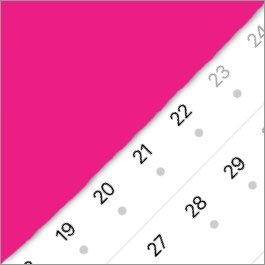IMPROVISING IN A FUNK STYLE
By JJ Wheeler – musician, teacher and record producer
The funk style was born in the 1960’s and utilises features and sounds common to soul, jazz and R’n’B music. Funk typically reverses the trends featuring melody and harmony seen in earlier styles of music, instead placing greater emphasis on rhythmic drive and groove. Many early funk songs featured one-chord and repetitive patterns (vamps), over which there would be embellishments or vocal lines. The focus is often on the placement of notes in a rhythmically appropriate and ‘groovy’ way, rather than flourishes of notes or technically accomplished melodic lines.
As with most styles, we’ve seen development and cross-pollination with other genres to create even more types of music, such as disco, or sub-genres, such as funk-rock, acid jazz and neo-soul. Even some of the styles not directly associated with funk often bear many of the features and stylistic traits pioneered by the funk movement. Pop songs often feature simple, instantly recognisable vamps or ostinatos, and dance music relies heavily on a continuous drum pattern. Many of today’s hip hop and rap artists pay homage to the funk movement, regularly sampling sections from old funk records, most famously the ‘Amen Drum Break’, which is prevalent in hundreds of pop, hip hop, rap and dance tracks. This was originally performed by G. C. Coleman on The Winstones’ funk song ‘Amen, Brother’ and can be found from 1:27 to 1:34 of the following video.
Improvising in a funk style
Funk is less about navigating chord progressions or creating winding melodies and more about the rhythmic content. This applies to any instrument or singer performing within the style. First and foremost, it’s worth getting to know some of the key artists and songs within the history to get a feel for the music and the features.
When performing and improvising in the funk style, the first thing to think about is beat placement. What is the feel of the music? Do we want to create a forward drive (potentially quite aggressive in sound)? Is it all incredibly precise or is the music more laid-back? If the feel is laid-back, we want to make the music sound as relaxed and ‘groovy’ as possible. Therefore, whatever you choose to play, try to sit on the ‘back’ of the beat (i.e. ‘behind’ or just after the beat, rather than ahead of it).
Simplicity is often key. If you can present an idea and make it sit ‘in the pocket’, this will sound a million times better than rushing into a complex run of notes, which bear little resemblance to the style. Funk is about groove, feeling and making people want to move, not showing off your licks! Try taking a short phrase or idea and repeating it several times. You can develop this idea by starting on different beats of the bar, or adding/subtracting parts of the phrases, or even embellishing the phrase with melismas (for vocalists), grace notes (keyboardists), hammer-ons and bends (for guitarists) or ghost notes and drags (drummers).
Example improvising videos
Watch videos with session musicians and Rock & Pop examiner Tom Fleming and session musicians Harry the Piano, Sam Edgington and Brendan Reilly for tips and ideas on how to improvise in a funk style:
Influential artists
James Brown is probably the most famous of the founding fathers of funk. By the mid-1960’s, hits such as ‘I Got You (I Feel Good)’ and ‘Papa’s Got A Brand New Bag’ were storming the U.S. charts, with later iconic hits such as ‘Get Up (I Feel Like Being A) Sex Machine’ also achieving world-wide recognition to this day.
Alongside James Brown, artists such as Sly & The Family Stone and The Meters grew to fame. ‘Cissy Strut’ by The Meters has grown in funk cult status, despite only reaching no. 4 in the R’n’B charts and no. 23 in the Billboard 100 upon its release in 1969. Chaka Khan is one of leading lights for ladies in funk, with ‘Ain’t Nobody’ and ‘I’m Every Woman’ now considered funk classics.
More recent artists include Bruno Mars, producer Mark Ronson, Tower of Power and British Hammond-led band The James Taylor Quartet, whose career grew out of the heavily funk influenced acid-jazz movement in the late 1980’s/early-90’s. Many other huge acts such as Red Hot Chilli Peppers also cite funk as an important part of their style.
Funk Spotify playlist
We've pulled together a playlist of funk songs that appear on our Rock & Pop 2018 syllabus as well as other great funk and funk influenced songs for further inspiration and ideas. Follow our Spotify profile and playlists to easily find the playlists whenever you want to have a listen.
About JJ Wheeler
JJ Wheeler is a professional touring and session drummer and percussionist, teacher and record label producer. He has worked with artists such as Celine Dion, worked on West End musicals including The Bodyguard and regularly performs in a range of bands across the UK and abroad. JJ runs workshops, clinics and masterclasses all over the world, and is also a Trinity Rock & Pop examiner







